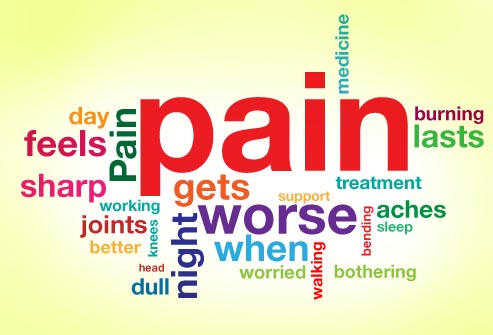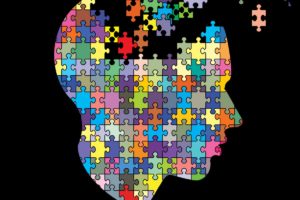
Diagnosed with Cancer? Your two greatest challenges are understanding cancer and understanding possible side effects from chemo and radiation. Knowledge is Power!
Learn about conventional, complementary, and integrative therapies.
Dealing with treatment side effects? Learn about evidence-based therapies to alleviate your symptoms.
Click the orange button to the right to learn more.
- You are here:
- Home »
- Blog »
- side effects ID and prevention »
- Chemo brain, Pain But Complete Remission
Chemo brain, Pain But Complete Remission

“Approximately 20 to 30% of people who undergo chemotherapy experience some level of post-chemotherapy cognitive impairment aka chemo brain.”
Hi David- I was diagnosed with Multiple Myeloma in October 2020. I underwent 4 sessions of RVd, then an aSCT March 2021. I achieved a complete response in June 2021. Chemo brain is my main challenge these days.
I’m on no maintenance, My MM specialist said “why put more poison in your body if it not necessary, we’ll keep a close eye on your numbers and re-evaluate if things change.”
I was happy with his decision. I am a little concerned though because my chemo brain seems to be getting worse and I get very tired and fatigued, I also have lots of pains throughout my body and not just in my joints. Sally
Chemo brain, Chemo fog Rehab-
- Modest daily exercise
- Supplementation (specifics to enhance brain health)
- Clean diet
- Most importantly- Brain Games (I use BrainHQ)
Non-Cancer Chronic Pain Rehab-
- acupuncture
- CBD oil
- exercise, stretching
- massage
- MM Survivor
- MM Cancer Coach
- Director PeopleBeatingCancer
Recommended Reading:
The PBC Side Effects Program-(chemo brain, AVN, pain)
Post-chemotherapy cognitive impairment
“Post-chemotherapy cognitive impairment (PCCI) (also known in lay terms as chemotherapy-induced cognitive dysfunction or chemo brain, or chemo fog) describes the cognitive impairment that can result from chemotherapy treatment.
Approximately 20 to 30% of people who undergo chemotherapy experience some level of post-chemotherapy cognitive impairment (chemo brain). The phenomenon first came to light because of the large number of breast cancer survivors who complained of changes in memory, fluency, and other cognitive abilities that impeded their ability to function as they had pre-chemotherapy.[1]
Although the causes and existence of post-chemotherapy cognitive impairment (chemo brain) have been a subject of debate, recent studies have confirmed that post-chemotherapy cognitive impairment is a real, measurable side effect of chemotherapy that appears in some patients.[2]
While any cancer patient may experience temporary cognitive impairment while undergoing chemotherapy, patients with PCCI, chemo brain, chemo fog, continue to experience these symptoms long after chemotherapy has been completed…
The clinical relevance of PCCI aka chemo brain is significant, considering the increasing number of long-term cancer survivors in the population, many of whom may have been treated with aggressive dosing of chemotherapeutic agents, or with chemotherapy as an adjuvant to other forms of treatment.[6] In some patients, fear of PCCI can impact treatment decisions. The magnitude of chemotherapy-related cognitive changes and their impact on the activities of daily living are uncertain.[7]…”
Treatment of chronic non-cancer pain
“Chronic pain is a pervasive problem that affects the patient, their significant others, and society in many ways. The past decade has seen advances in our understanding of the mechanisms underlying pain and in the availability of technically advanced diagnostic procedures; however, the most notable therapeutic changes have not been the development of novel evidenced-based methods, but rather changing trends in applications and practices within the available clinical armamentarium.
We provide a general overview of empirical evidence for the most commonly used interventions in the management of chronic non-cancer pain, including:
- pharmacological,
- interventional,
- physical,
- psychological,
- rehabilitative,
- and alternative modalities.
Overall, currently available treatments provide modest improvements in pain and minimum improvements in physical and emotional functioning. The quality of evidence is mediocre and has not improved substantially during the past decade. There is a crucial need for assessment of combination treatments, identification of indicators of treatment response, and assessment of the benefit of matching of treatments to patient characteristics…”
Avascular Necrosis (AVN or Osteonecrosis)
“Avascular necrosis (AVN) is the death of bone tissue due to a loss of blood supply. You might also hear it called osteonecrosis, aseptic necrosis, or ischemic bone necrosis.
If it isn’t treated, AVN can cause the bone to collapse. AVN most often affects your hip. Other possible sites are the shoulder, knees, and ankles…
- Bisphosphonates. These medications that boost bone density could lead to osteonecrosis of the jaw. This could be more likely if you’re taking them for multiple myeloma or metastatic breast cancer.
Avascular Necrosis Treatment
- Medications. If the doctor knows what’s causing your avascular necrosis, treatment will include efforts to manage it. This can include:
- Blood thinners. You’ll get these if your AVN is caused by blood clots.
- Nonsteroidal anti-inflammatory drugs (NSAIDs). These will help with pain.
- Cholesterol drugs. They cut the amount of cholesterol and fat in your blood, which can help prevent the blockages that lead to AVN.
- Surgery. While these nonsurgical treatments may slow down the avascular necrosis, most people with the condition eventually need surgery. Surgical options include:
- Bone grafts. Removing healthy bone from one part of the body and using it to replace the damaged bone
- Osteotomy. Cutting the bone and changing its alignment to relieve stress on the bone or joint
- Total joint replacement. Removing the damaged joint and replacing it with a synthetic joint
- Core decompression. Removing part of the inside of the bone to relieve pressure and allow new blood vessels to form
- Vascularized bone graft. Using your own tissue to rebuild diseased or damaged hip joints. The surgeon first removes the bone with the poor blood supply from the hip, then replaces it with the blood-vessel-rich bone from another site, such as the fibula, the smaller bone in your lower leg.
- Electrical stimulation. An electrical current could jump-start new bone growth. Your doctor might use it during surgery or give you a special gadget for it…”


